Personnel selected to fly and operate the Reaper Remotely Piloted Aircraft System (RPAS) will now benefit from an improved training system which also paves the way for the arrival of the new Protector RG Mk1, say the Royal Air Force.
According to a news release, future Reaper pilots and operators will now spend six weeks at the General Atomics Aeronautical Systems Flight Test and Training Centre in North Dakota undergoing ground school and learning basic aircraft operations.
“This training will initially run in parallel to training undertaken at Holloman AFB in New Mexico, home to the largest RPA training establishment in the world. Students will then progress to Creech AFB where they will join 39 Squadron at the Nevada base to undergo the more advanced training.
The squadron has absorbed the 54 Squadron Reaper Training Flight which previously taught the UK specific aspects of operating Reaper including rules of engagement and UK safety procedures. At the conclusion of their Combat Ready work up training personnel can fly operational sorties without supervision.”
Wing Commander Colin Welsh, Officer Commanding 39 Squadron
“Using the Flight Test & Training Centre in Grand Forks enables us to control the output and timelines. Using RAF and GA-ASI instructors enables us to have complete control over the syllabus and training objectives at every stage of the course negating the need for a conversion to UK specific tactics, techniques and procedures. This is a huge win for us.”
The RAF also say that a similar training system will be used for the new Protector RPAS which will enter RAF service in the early-2020s.
“Protector will be deployed in wide-ranging Intelligence, Surveillance, Targeting and Reconnaissance (ISTAR) operations where its ability to fly consistently for up to 40 hours, will offer vastly improved armed ISTAR capability. It would also be available, if requested, to support civilian agencies in the UK, for example in search and rescue or disaster response missions.”



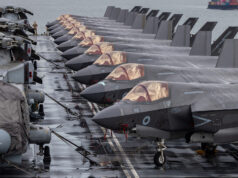
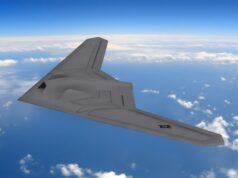
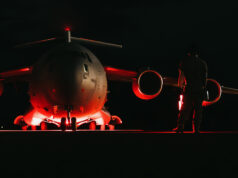
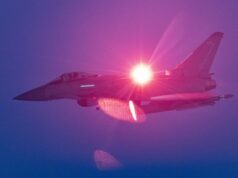
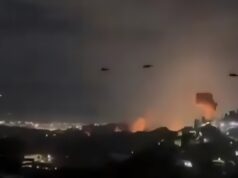
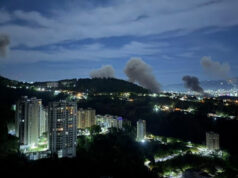
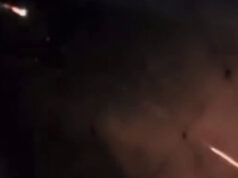

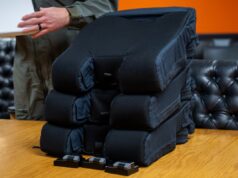

Are there any significant differences between US and UK rules of engagement for drones?
Are we more risk or civilian casualty averse and do we have more rules about the firing of weapons?
Not certain, but I’d guess so given the US history of friendly fire incidents and bombing wedding processions.
And the Brits have never done that before? HAHA
I recall a blue on blue in 2003 with two Challenger 2, and the SAS shooting an SBS guy when the SBS strayed into the SAS area area of operations in 82.
I don’t recall bombing wedding processions, no. Or Ticonderogas shooting down airliners, or the RAF shooting down returning F15s like the Patriot shooting down the Tornado GR4, or anything of that nature. From what I read our poor soldiers are restrained quite badly.
No need to get defensive Dan, as I think you’re American. The US have that reputation I’m afraid.
I care not, still glad we are allies.
Danielle I genuinely think the Americans take all necessary precautions. They’re very professional (NSW aside). Ultimately someone ‘buys the bomb’ and takes owner ship of the end result.
The shit the Americans get for FF incidents is unwarranted to the point that it makes me shake with anger.
They’re top blokes who take every step to make sure they don’t put a jdam into someone’s bathroom without good reason. They’re always there to support us without question and had never personally let me down where as our side were an utter disgrace at times.
I’ve seen many a blue on blue, green on blue from our side. It all comes down to training. Personally seen one of our blokes killed as a result.
Our training is never about distinguishing who is in front of you but more about assault assault assault. That makes us fast and aggressive but also doesn’t leave much in the way of taking a moment to figure out what is actually happening.
Can’t speak for the RAF or Navy, from personal experience it’s a mixed bag.
That’s really interesting to know Reaper. I wonder why that reputation has stuck? Were our side a disgrace for lack of assets, or lack of will to fire? Like the question Peter asked at start of thread, do our ROE restrict a response?
I meant are we less willing to use weapons or risk the loss of a drone as we don’t have anywhere near as many as the US?
All countries have different thresholds for the use of force and I was simply asking if the UK and US had the same rules or will that training section be different?
I have no idea Peter. As I said, I guessed.
I think the US gets a hard time for drone strikes when the UK probably launches 1 for ever 100 US drone strikes. The US definitly has strict rules for engagement, but remember a lot of these terrorist targets never travel more than 6 feet from their 10 children for that very reason. I’m sure some decisions aren’t easy to make.
I can’t really comment on the US ROE, but for the UK it is quite restrained. The last tour of Afghan highlighted this when calling in an airstrike. The Tornado that was on call wasn’t allowed to engage due to the closeness of “friendlies”. Whereas a USMC F18 it wasn’t a problem, with a “keep you heads down fellas”. For the RAF there were a number of hoops to cross. The pilot had to report back to the commander on the Joint operations centre for permission to drop. This slowed the process down massively. When the Harriers were in theatre, the ROE was a bit more relaxed and the pilot had the authority of making the decision. This changed when the Tornados got in to theatre, but I believe it was politically driven and not militarily. It was also at the time when the US had dropped on a number of targets where it was later reported to be wedding celebrations. You just have to look at the stats for the number of weapons dropped by Harrier compared to Tornado. If I remember correctly there were a couple of months where the Tornados didn’t drop anything. It’s the same today with Reaper, the UAV pilot does not have the decision to engage or not, there is a senior officer in charge who now makes the decision to make sure the ROE are followed and collateral damage is kept to a minimum.
Any news as to whether the UK will be incorporating maritime surveillance tech from GA SeaGuardian ? Seems it would be a good fit to extend the capability of the P8 Poseidon fleet.
That’s the stuff that the Aussies were interested in, right? Maritime AESA in longitudinal strips running along the fuselage?
It looked like a brilliant idea, for exactly the reasons you mention. Could also be a segway into getting AESA radars onto CSG assets int he future too, as a future replacement for Crowsnest. I know there are differences between air search and sea search, but I believe a lot is to do with processing and where the array is angled, rather than the actual hardware itself.
OT, but still ISTAR and of interest.
https://defence-blog.com/news/russian-fighter-jets-intercept-u-s-spy-plane-over-sea-of-japan.html
As said many times when the outrage rises that Russia send recc flights. The west, especially the US, has done the same, for decades.
Be interesting to know if the US plane had its transponder turned on. The main gripe with the Russians’ flights is not their presence in international airspace but the fact that they do it in a way that puts other aircraft at risk.
True.
“And even better I am pleased to confirm that we are already talking with international partners about how we develop capability even further including in the maritime domain.”, Air Chief Marshal Sir Stephen Hillier.
Question: do RPA/drone pilots still have to go through normal pilot training as well, or is all their training on simulators?